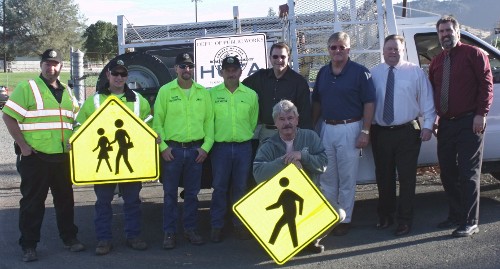- Elizabeth Larson
- Posted On
Lake County takes No. 2 spot for marijuana eradications statewide
The report also showed that Lake County was once again in the top five counties for eradications – with billions of dollars in marijuana seized locally – but for the first time in three years Lake fell from the top spot.
The California Department of Justice Bureau of Narcotic Enforcement's (BNE) Campaign Against Marijuana Planting (CAMP) netted more than 4.4 million illegally grown marijuana plants this year, up from the 2.9 million eradicated in 2008, according the agency's report.
During the 102-day season, officials conducted 665 raids across 41 of California's 58 counties, CAMP reported.
Officials found more than 3.3 million plants on public lands, just over one million plants on private lands, made 111 arrests and seized 89 weapons.
The plants eradicated this year across the state had a street value of $17.8 billion, officials reported.
“We've seen a huge increase in the number of locations” for grows, said Sheriff Rod Mitchell, who added that he's proud of his staff's efforts in addressing illegal marijuana grows.
From 2006 to 2008, Lake County was ranked as the California county with the most eradications of illegally grown marijuana plants.
However, this year Shasta County jumped to the front, with a total of 557,862 plants, according to CAMP.
CAMP reported Lake's final numbers at 506,506, but Capt. James Bauman of the Lake County Sheriff's Office reported final season numbers of 517,942 plants.
The estimated value of plants and processed marijuana combined in Lake County was $3.5 billion, said Bauman.
Other counties in the top five included Mendocino, 440,689 plants; Fresno, 368,691; and Los Angeles, 340,187. Marijuana seizures increased in all five of the top counties, CAMP reported.
CAMP statistics showed the number of plants found on public lands was close to twice last year's total, while the plants found on private lands grew only slightly.
The grows on public lands are giving rise to concerns over deforestation, as well as damage to the environment and wildlife due to heavy fertilizers and other chemicals, CAMP reported.
Bauman said in Lake County law enforcement seized 272 pounds of processed marijuana and 14 firearms, and made 34 arrests, a number that accounts for a third of the total arrests made statewide and is 11 times the number of arrests made locally in 2008.
Lake County's eradication for 2008 netted 498,174 plants 220 pounds of processed marijuana, seven firearms seized and three arrests, as Lake County News has reported. In 2007, the officials seized 507,000 plants and eradicated 344,241 plants for 2006.
The Lake County Sheriff's Office has one detective assigned full-time to marijuana suppression, Bauman said, plus assistance from local law enforcement and as many as 15 CAMP members during operations, which means up to 20 people can be involved in a raid.
Special Agent Michelle Gregory of the Department of Justice's Bureau of Narcotic Enforcement said she didn't have an exact figure for the state's CAMP budget, which comes through federal monies and grants.
However, Gregory added that it's not as much money as people think – estimating it was under $1 million.
The funds to cover Lake County's eradication operations are found in the sheriff's marijuana suppression budget fund 2203, which Bauman said is entirely funded by money from the federal Drug Enforcement Administration and the US Forest Service.
For the 2009-10 fiscal year, the marijuana suppression funds totaled $310,000, up from $305,000 in 2008-09, according to the county's final budget.
Bauman said $69,000 is left in that account; of that, $27,500 is currently encumbered for equipment purchases pending DEA approval, leaving about $42,000.
Mitchell said he believes the increased number of plants seized represents a number of factors – from continued efforts by the Mexican drug cartels held responsible for the grows to a greater amount of his department's staff time dedicated to surveillance, eradication and developing criminal cases against suspects.
He said the number of locations has grown as growers become more brazen.
Mitchell pointed to areas of the south county – traditionally not seen as good grow locations – which saw more illegal marijuana growing this year.
“We're seeing south county exposure perhaps for people coming up out of the Bay Area,” he said.
Still, criminal cultivation is increasing everywhere, Mitchell said.
Gregory reported that CAMP has been operating for 26 years as a multi-agency task force comprised of local, state and federal agencies.
The participating agencies in CAMP – created to help counties eradicate illegal marijuana growing and trafficking – include the Bureau of Narcotic Enforcement, Bureau of Land Management, California Department of Fish and Game, California Department of Parks and Recreation, California Emergency Management Agency, California Highway Patrol, California National Guard, Drug Enforcement Administration, National Parks Service, Office of National Drug Control Policy–National Marijuana Initiative and U.S. Forest Service.
E-mail Elizabeth Larson at This email address is being protected from spambots. You need JavaScript enabled to view it. . Follow Lake County News on Twitter at http://twitter.com/LakeCoNews and on Facebook at http://www.facebook.com/pages/Lake-County-News/143156775604?ref=mf .








